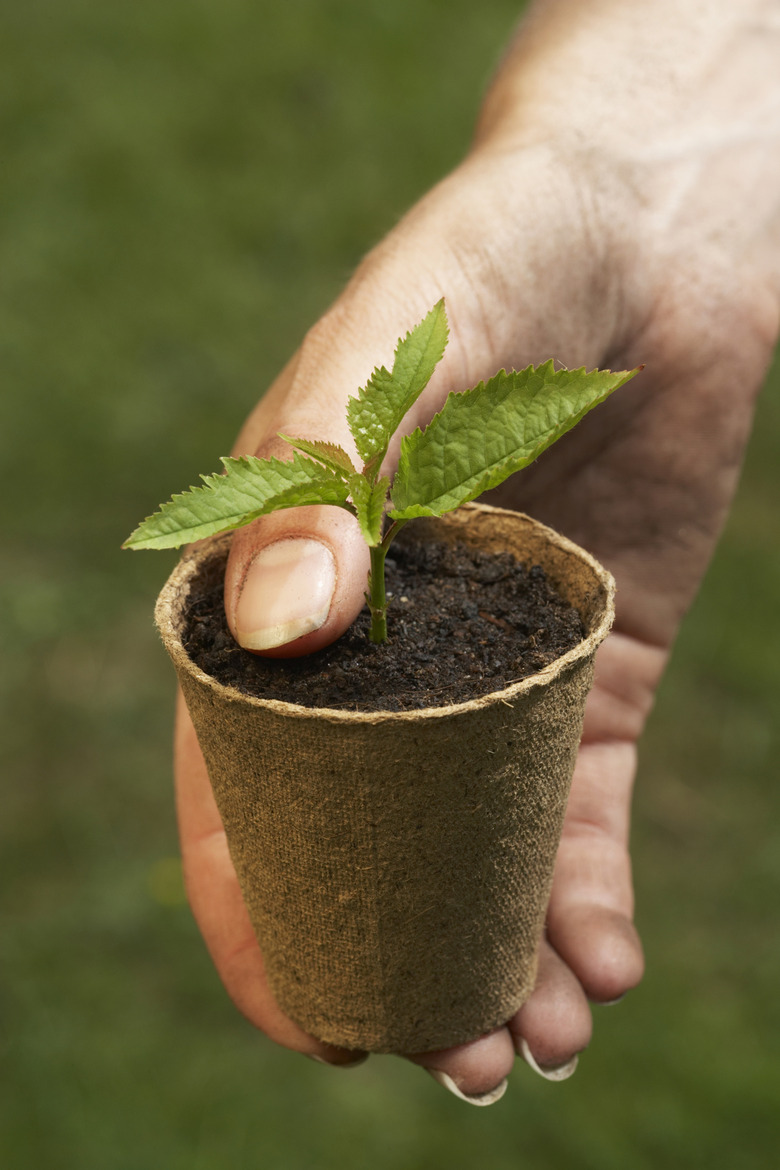How To Plant Seedlings In Coco Coir
Coconut coir comes from the fibrous interior of the coconut husk. The coir provides a sterile medium especially well-suited to starting seeds because it doesn't retain fertilizer salts, which can damage tender young roots. It's usually used as an environmentally friendly peat alternative in a potting medium. Its fine texture provides soil aeration, which helps seedlings root well.
Coconut coir comes from the fibrous interior of the coconut husk. The coir provides a sterile medium especially well-suited to starting seeds because it doesn't retain fertilizer salts, which can damage tender young roots. It's usually used as an environmentally friendly peat alternative in a potting medium. Its fine texture provides soil aeration, which helps seedlings root well.
Potting Medium
Although commercial seedling mixtures are available that contain coir, you can also make your own. Coir comes as a compressed dry brick, which requires rehydration before use. Coir isn't suitable on its own as a medium. Combine 2 parts of the coir with 2 parts sterile compost and 1 part sand or vermiculite. Seedlings may have trouble penetrating the medium if it contains large particles. Sifting the coir mixture through a mesh screen removes any large pieces.
- Coconut coir comes from the fibrous interior of the coconut husk.
- The coir provides a sterile medium especially well-suited to starting seeds because it doesn't retain fertilizer salts, which can damage tender young roots.
Container Needs
Flats, cellpacks and small pots work well for starting seeds. Flats allow you to plan multiple rows of small seedlings and work best for plants that only grow for a short time indoors before you transplant. Cellpacks consist of multiple attached pots, so it's easier to separate the plants for transplanting. Small seedling pots or pots made of recycled containers, such as yogurt, work best for larger seedlings. You can also use biodegradable peat or coir pots that decompose in the soil after transplanting. Only use seedling containers with bottom drainage; otherwise, the potting medium can become too wet for healthy growth.
Germination
Proper sowing improves germination. Fill your seedling containers to the rim with the coir medium. A thorough watering that completely moistens the soil ensures the seeds receive enough moisture to sprout. Sowing depth varies, but you generally plant seeds to a depth twice their width. After sowing, cover the containers with a plastic bag so the medium doesn't dry out before the seeds germinate. Most seeds sprout within a week at temperatures between 70 and 75 degrees Fahrenheit.
- Flats, cellpacks and small pots work well for starting seeds.
- Only use seedling containers with bottom drainage; otherwise, the potting medium can become too wet for healthy growth.
Basic Care
Once the seedlings germinate, they require six to eight hours of daily sunlight. Removing the plastic bag allows air to circulate freely, but the seedlings will need regular watering because the uncovered coir medium will dry out. Seedlings need watering when the surface of the medium feels dry. The seedlings can usually go one to two weeks with fertilizer, since the compost in the medium provides some nutrition. Dissolving ¼ teaspoon of a 24-8-16 fertilizer or similar houseplant feed in a gallon of water, and watering the seedlings with it every one to two weeks, provides sufficient nutrition.
